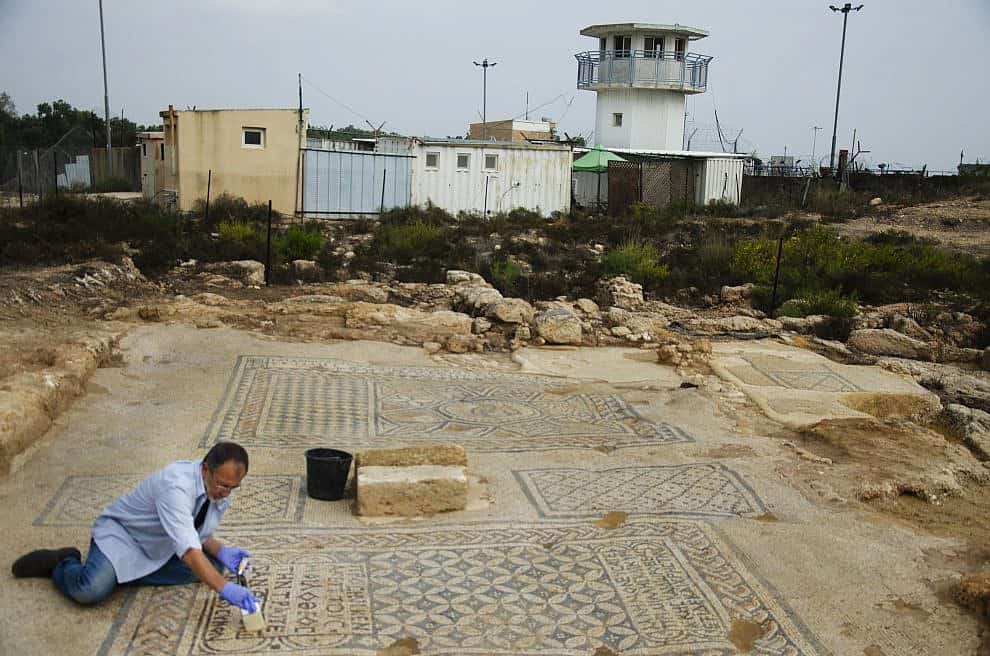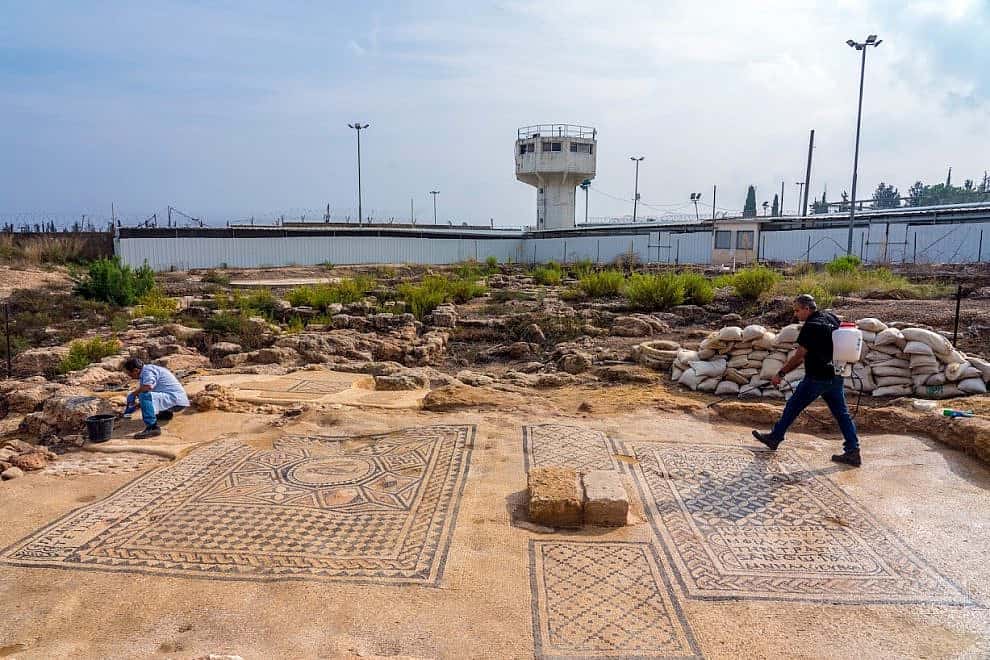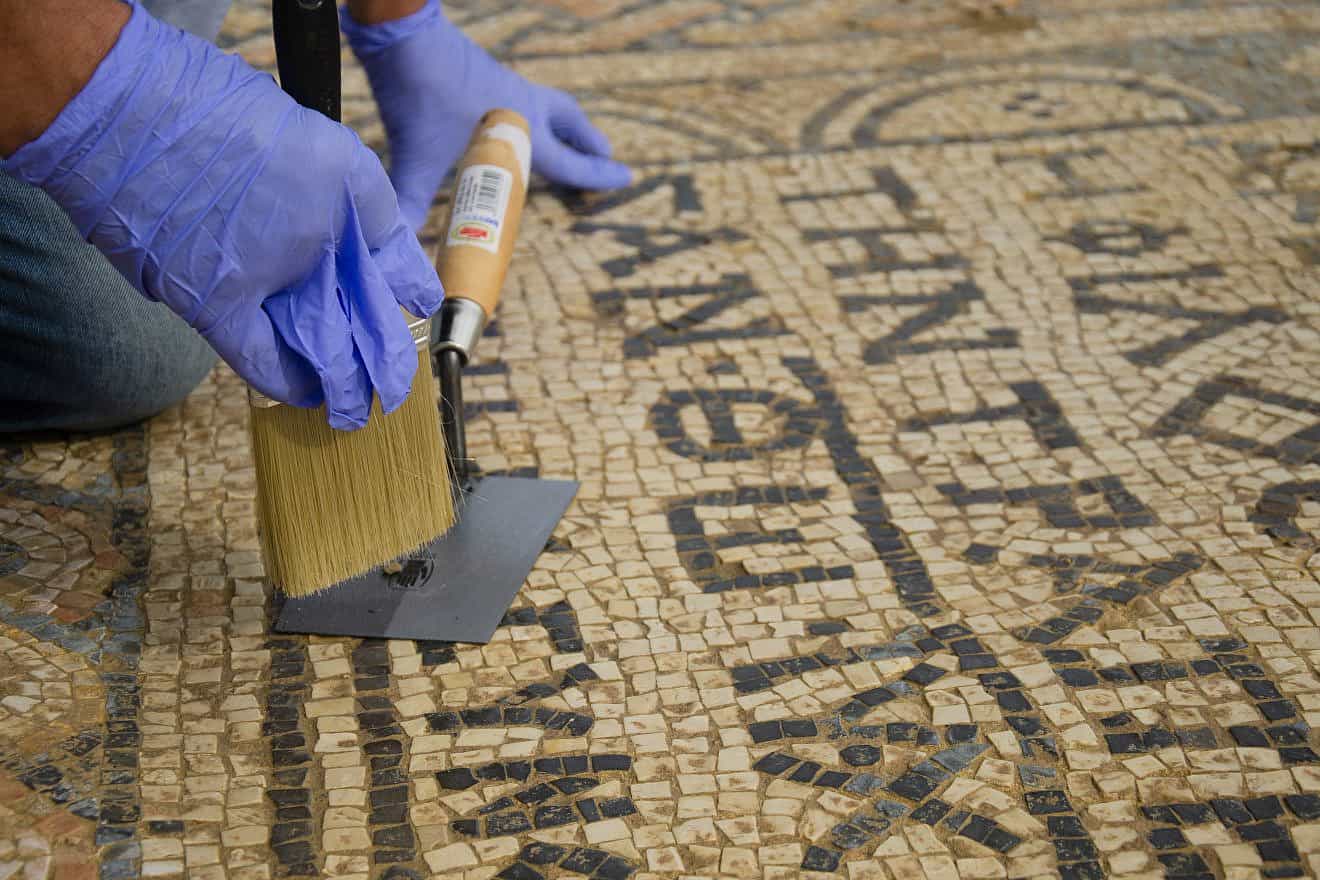Reports that Israel is considering lending an ancient Christian mosaic, which it found beneath the grounds of Megiddo Prison some 25 miles southwest of Haifa, have generated some controversy.
The Museum of the Bible in Washington, D.C., a proposed venue for the loan, has drawn harsh criticism from those who oppose it on political and religious grounds. A professor told the Associated Press that it is a “right-wing Christian nationalist Bible machine” tied to “other institutions that promote white evangelical, Christian nationalism, Christian Zionist forms.”
The museum, which has ties to the Green family that owns the Hobby Lobby chain of arts and crafts stores, has a long-term exhibit titled “The People of the Land: History and Archaeology of Ancient Israel” with Israel Antiquities Authority artifacts. It is arguably the only Washington venue, except the Israeli embassy, in which Israel can tell its own story.
“The Israel Antiquities Authority is in contact with a few museums, including the Washington, D.C., Museum of the Bible, with the aim of reproducing the procedure carried out with the Lod Mosaic that was also conserved, and then exhibited at several important museums around the world, and finally returned to its permanent home in Israel,” Yoli Schwartz, spokesman for the authority, told JNS.
The independent government agency will make a decision in consultation with Israel’s Archaeological Council in the coming weeks, Schwartz said.
Schwartz told JNS that the authority is “happy and proud” that Megiddo Prison is moving to a new location so the IAA can “present the important Megiddo mosaic to the public in its original context.” The authority’s “determination and efforts” made that possible, he said.
“This important mosaic was discovered in the excavations carried out by the Israel Antiquities Authority, and it is our foremost priority to ensure its integrity,” Schwartz said.
Conservation experts at the authority determined that the mosaic should be removed from its original setting to conserve it properly in order to show it to the public.

“Leaving it in place would be irresponsible due to the large-scale mechanical earthworks that will demolish extensive parts of the prison buildings,” Schwartz said. “The Israel Antiquities Authority will continue to invest efforts to make archaeology accessible to the public, and we are excited to present the Megiddo mosaic to the public worldwide.”
Critics have said that moving the mosaic would mean losing its historical context. However, other museums in Washington and the rest of the world are full of items removed from their original contexts. Very few items are created specifically to be displayed in a museum, and those are overwhelmingly works of contemporary art.
Asked about reports that Israel might lend the mosaic to the Washington museum, the U.S. State Department said last week that the federal government is not a party to the decision.
“The U.S. government is not involved in this at all,” Vedant Patel, principal deputy spokesman at the State Department, told Said Arikat, Washington bureau chief of the Palestinian daily Al-Quds. Arikat had stated that “this presumably is some art that is being mutilated, uprooted and relocated.”
“I would refer you to the Museum of the Bible, which is a privately-run museum, as well as the Israeli Antiquities Authority, to discuss any exchange of artifacts or things of that nature,” Patel told Arikat. “This is not something that the United States is party to.”
Mark Letteney, an archaeologist and assistant professor of history at the University of Washington in Seattle, in Washington state, wrote on X (Twitter) that he was “appalled” to learn about the plan to “uproot” the mosaic and move them to the Museum of the Bible. He called it a “bad idea which threatens the ability of archaeologists to tell the story of one of Israel’s most important Roman sites.”

The mosaic, which was discovered in 2005, makes an early reference to Jesus. It is believed to come from the earliest Christian prayer hall.
Jeffrey Kloha, chief curatorial officer at the Museum of the Bible, told the AP that the Israel Antiquities Authority would make the final decision, but the museum “of course would welcome the opportunity to educate our thousands of visitors on important pieces of history such as this mosaic.”


























